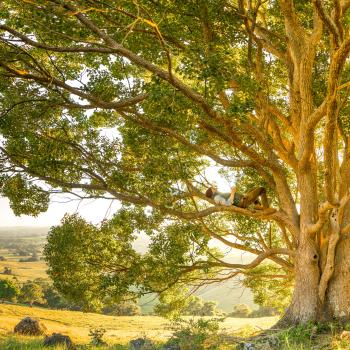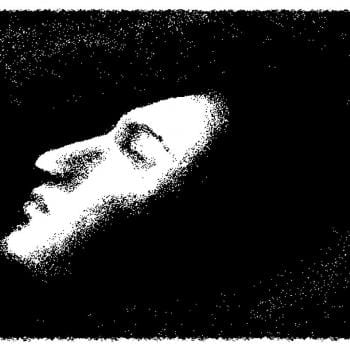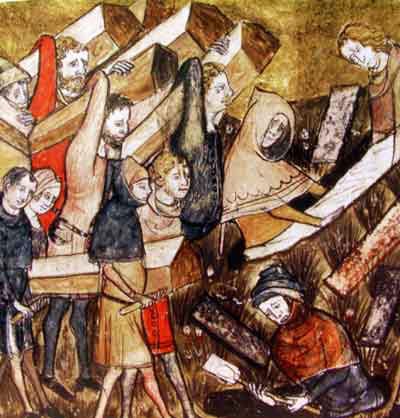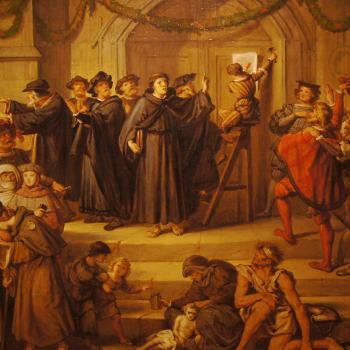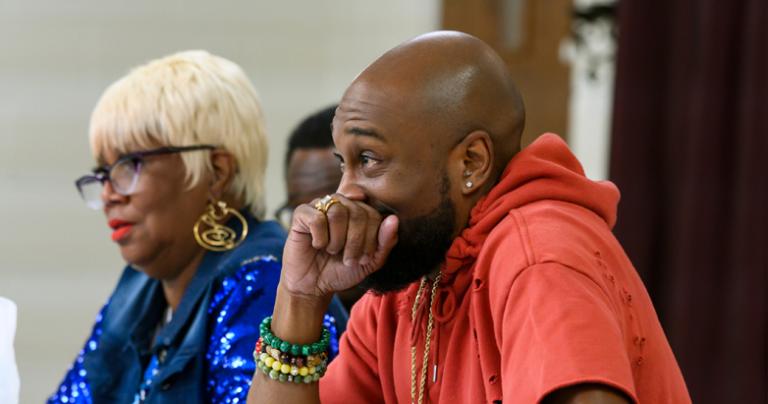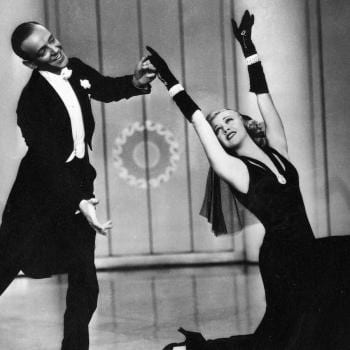- Trending:
- Forgiveness
- |
- Resurrection
- |
- Joy
- |
- Afterlife
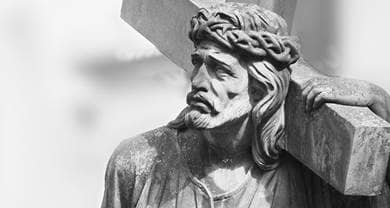
RELIGION LIBRARY
Christianity
Sacred Time
This article introduces some Christian practices that are broadly applicable to multiple traditions. The worship life of particular Christian denominations will be described in the articles on those traditions.
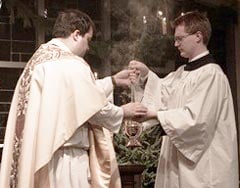 Christian worship ranges in style from the use of carefully structured and prescribed rituals, called liturgy, to an emphasis on free and spontaneous expression. The Roman Catholic, Eastern Orthodox, Anglican, and Lutheran congregations that incorporate liturgy are called liturgical churches. Congregations with a stronger liturgical emphasis are called "high" churches, while those placing less importance on liturgy are called "low" or "non-liturgical" churches.
Christian worship ranges in style from the use of carefully structured and prescribed rituals, called liturgy, to an emphasis on free and spontaneous expression. The Roman Catholic, Eastern Orthodox, Anglican, and Lutheran congregations that incorporate liturgy are called liturgical churches. Congregations with a stronger liturgical emphasis are called "high" churches, while those placing less importance on liturgy are called "low" or "non-liturgical" churches.
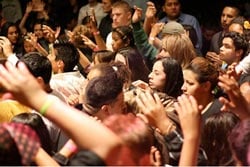 Baptist, Mennonite, Pentecostal, Holiness, Quaker, and free evangelical churches are among the non-liturgical churches, and they encourage spontaneous prayer and testimonials of faith, Bible reading, and praise and inspiration in common worship. Presbyterians and Methodists, who follow common worship practices without emphasizing traditional liturgy, fall somewhere in between liturgical and non-liturgical denominations. Many modern Christians participate infrequently in the worship services of the churches,
Baptist, Mennonite, Pentecostal, Holiness, Quaker, and free evangelical churches are among the non-liturgical churches, and they encourage spontaneous prayer and testimonials of faith, Bible reading, and praise and inspiration in common worship. Presbyterians and Methodists, who follow common worship practices without emphasizing traditional liturgy, fall somewhere in between liturgical and non-liturgical denominations. Many modern Christians participate infrequently in the worship services of the churches, 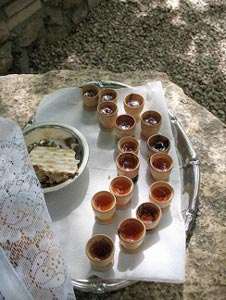 though they still identify themselves as Christian and advocate living in accordance with Christian morality.
though they still identify themselves as Christian and advocate living in accordance with Christian morality.
Founded by observant Jews, early Christian communities initiated rites of worship rooted in Jewish tradition. Both Jews and Christians conclude the week with a religious observance called the Sabbath, although Christians later moved the Sabbath from Saturday to Sunday, thought to be the day of Christ's resurrection and therefore the most special day of the Christian week. Building on the Jewish service of communal prayer, praise, scripture readings, and exposition in sermons, Christians added the distinctive practice of sharing the Eucharist, or Lord's Supper, at Sunday worship. 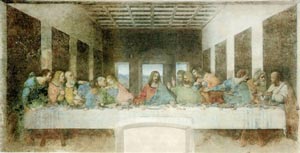 In remembrance of Jesus' final Passover meal with his disciples, all churches share the Lord's Supper, but the style and frequency of the observance varies.
In remembrance of Jesus' final Passover meal with his disciples, all churches share the Lord's Supper, but the style and frequency of the observance varies.
In many non-liturgical churches, a typical Sunday service includes songs, prayers, reading the Bible, and a sermon. The liturgical churches follow a worship service varying only slightly throughout the year. The order of service for these liturgical churches is contained in prayer books.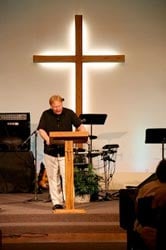 The service has two parts: the first part, often referred to as the liturgy of the word, includes hymns, prayers, scripture readings, a sermon, and a recitation of a creed; in the second part, called the liturgy of the Eucharist, the minister blesses bread and wine and shares them with the congregation. The service concludes when the minister blesses the people, instructing them to go out into the world in peace to serve Christ.
The service has two parts: the first part, often referred to as the liturgy of the word, includes hymns, prayers, scripture readings, a sermon, and a recitation of a creed; in the second part, called the liturgy of the Eucharist, the minister blesses bread and wine and shares them with the congregation. The service concludes when the minister blesses the people, instructing them to go out into the world in peace to serve Christ.
A cycle of recurring festivals and holy days marks the progress of the Christian calendar year. While Christians in the West use the Gregorian calendar, developed in the late 16th century, Eastern or Orthodox Christians often follow the old Julian calendar of the early Roman empire and set their celebrations later than those of their Catholic or Protestant counterparts, sometimes up to several weeks later.
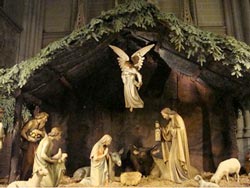 Christmas, or Christ-Mass, the celebration of the birth of Jesus, is observed in the West on December 25, although no one knows the exact date of Jesus' birth. It is a time of great joy and celebration accompanied by songs, plays, nativity scenes, and other rituals that celebrate God's incarnation. It is a special time for children, who are given roles to play in the reenactment of the story of the coming of the baby Jesus. Other traditions include exchanging cards and gifts to symbolize God's great gift, and decorating evergreen trees with lights to symbolize Christ's light shining in a dark world. The festival of Christmas has tremendous resonance in the non-Christian world, and is celebrated across the globe. Many Christmas traditions resemble traditions found in the pre-Christian midwinter celebrations of Europe and ancient Rome.
Christmas, or Christ-Mass, the celebration of the birth of Jesus, is observed in the West on December 25, although no one knows the exact date of Jesus' birth. It is a time of great joy and celebration accompanied by songs, plays, nativity scenes, and other rituals that celebrate God's incarnation. It is a special time for children, who are given roles to play in the reenactment of the story of the coming of the baby Jesus. Other traditions include exchanging cards and gifts to symbolize God's great gift, and decorating evergreen trees with lights to symbolize Christ's light shining in a dark world. The festival of Christmas has tremendous resonance in the non-Christian world, and is celebrated across the globe. Many Christmas traditions resemble traditions found in the pre-Christian midwinter celebrations of Europe and ancient Rome.
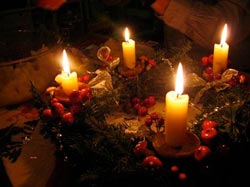 The festivals of Advent and Epiphany surround the Christmas celebration. Advent, which means "coming," is a penitential time of preparation, during which Christians read the words of the Old Testament prophets and prepare their hearts for the coming of Jesus. It begins four Sundays before Christmas. Many Christians place an Advent wreath in their homes, or mark the days until Christmas with an Advent calendar.
The festivals of Advent and Epiphany surround the Christmas celebration. Advent, which means "coming," is a penitential time of preparation, during which Christians read the words of the Old Testament prophets and prepare their hearts for the coming of Jesus. It begins four Sundays before Christmas. Many Christians place an Advent wreath in their homes, or mark the days until Christmas with an Advent calendar. 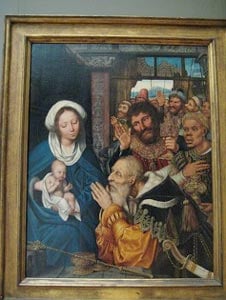 The Feast of the Epiphany falls on January 6th. In the eastern Church, Epiphany, which means "manifestation," is a commemoration of Jesus' baptism, and the churches hold a ritual blessing of the baptismal waters. In the West, Epiphany commemorates the coming of the wise men to bring gifts to the infant Jesus.
The Feast of the Epiphany falls on January 6th. In the eastern Church, Epiphany, which means "manifestation," is a commemoration of Jesus' baptism, and the churches hold a ritual blessing of the baptismal waters. In the West, Epiphany commemorates the coming of the wise men to bring gifts to the infant Jesus.
The central celebration in Christianity, Easter Sunday, occurs in the spring when Christians celebrate the resurrection of Jesus. Unlike Christmas, Easter does not have a fixed date. It is the oldest of the Christian festivals, originating in the Jewish Passover. Christians believe that Jesus rose from the dead the Sunday after Passover, so like Passover, Easter is a movable feast connected with the lunar calendar. After the somber remembrance of Jesus' death on Good Friday, Christians celebrate 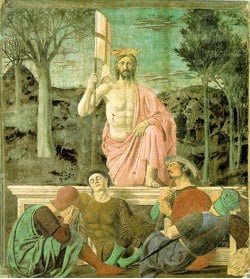 Easter Sunday with great joy, bright colors, and exuberant song. The Easter season lasts for six weeks, and includes the celebration of Christ's ascension, the day on which Jesus ascended to heaven. As with Christmas, many Easter traditions resemble traditions found in the pre-Christian celebrations of the spring equinox in Europe and ancient Rome. After the Easter season, most Christians also observe the coming of the Holy Spirit and the birthday of the Church at Pentecost in late spring.
Easter Sunday with great joy, bright colors, and exuberant song. The Easter season lasts for six weeks, and includes the celebration of Christ's ascension, the day on which Jesus ascended to heaven. As with Christmas, many Easter traditions resemble traditions found in the pre-Christian celebrations of the spring equinox in Europe and ancient Rome. After the Easter season, most Christians also observe the coming of the Holy Spirit and the birthday of the Church at Pentecost in late spring.
Some Christians also observe Lent, a forty-day period of fasting and prayer in preparation for Easter.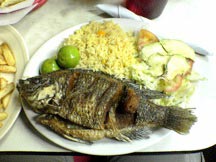 For many centuries, Christians gave up meat, dairy products, and wine, because these were associated with luxury. In the days just before Lent begins on Ash Wednesday, Christians use up the last of their meat and butter, enjoying a last indulgence of these pleasures on Tuesday, called Fat Tuesday, or Mardi Gras. This has become a special day of celebration in many countries, when people celebrate a carnival (from the Latin caro "meat" and levare "to remove").
For many centuries, Christians gave up meat, dairy products, and wine, because these were associated with luxury. In the days just before Lent begins on Ash Wednesday, Christians use up the last of their meat and butter, enjoying a last indulgence of these pleasures on Tuesday, called Fat Tuesday, or Mardi Gras. This has become a special day of celebration in many countries, when people celebrate a carnival (from the Latin caro "meat" and levare "to remove").
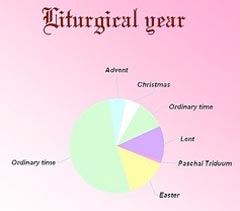 The weekly services and the holy days and festivals mark, in annual cycles, the life's journey of a Christian toward eternal communion with God. The Christian also seeks daily communion with God in personal rhythms of devotion.
The weekly services and the holy days and festivals mark, in annual cycles, the life's journey of a Christian toward eternal communion with God. The Christian also seeks daily communion with God in personal rhythms of devotion.
Study Questions:
1. How does liturgy help to classify a church? Describe “high” and “low” churches, and provide examples.
2. Is liturgy required for Christian services? Explain.
3. What elements of Jewish ritual are borrowed for Christianity's sacred time?
4. How does the Christian calendar create timelessness?
5. What is Easter? What leads up to it, and what follows it?


